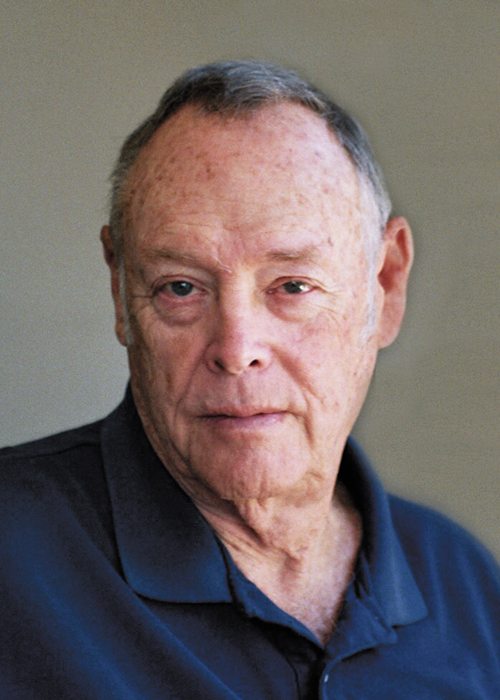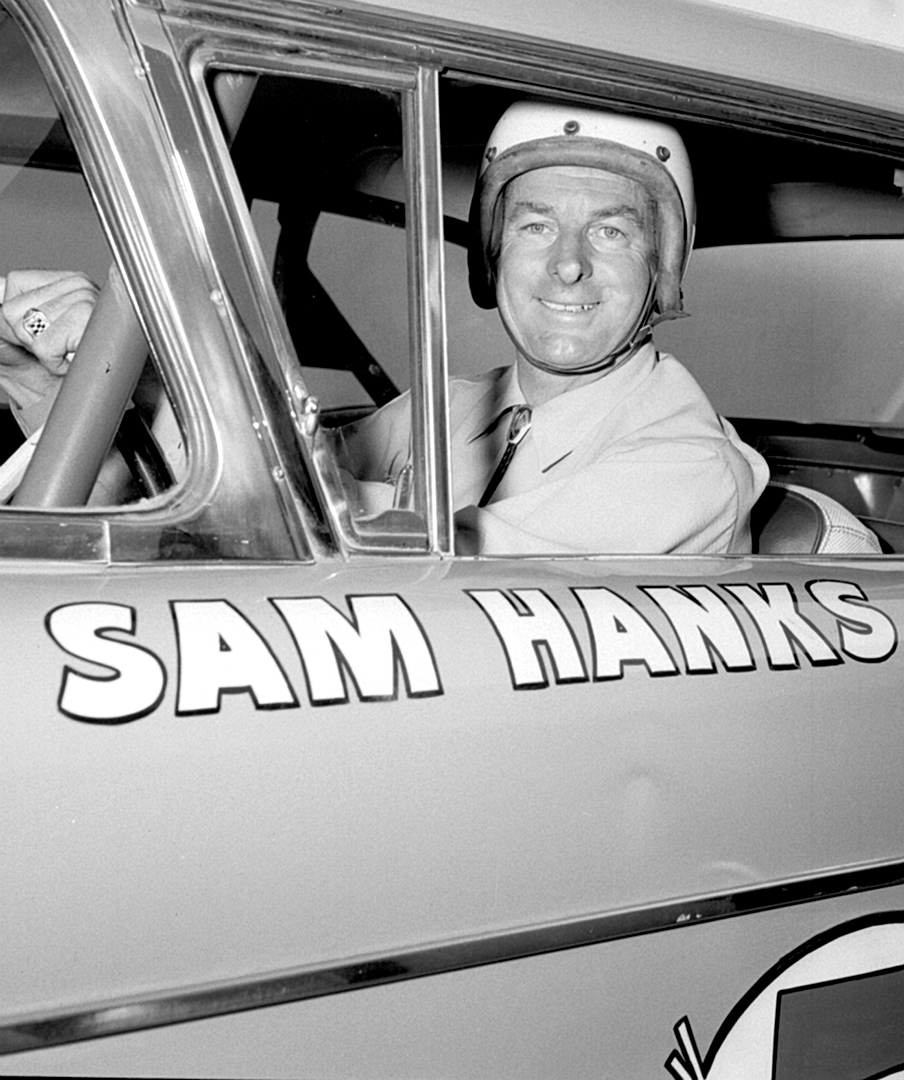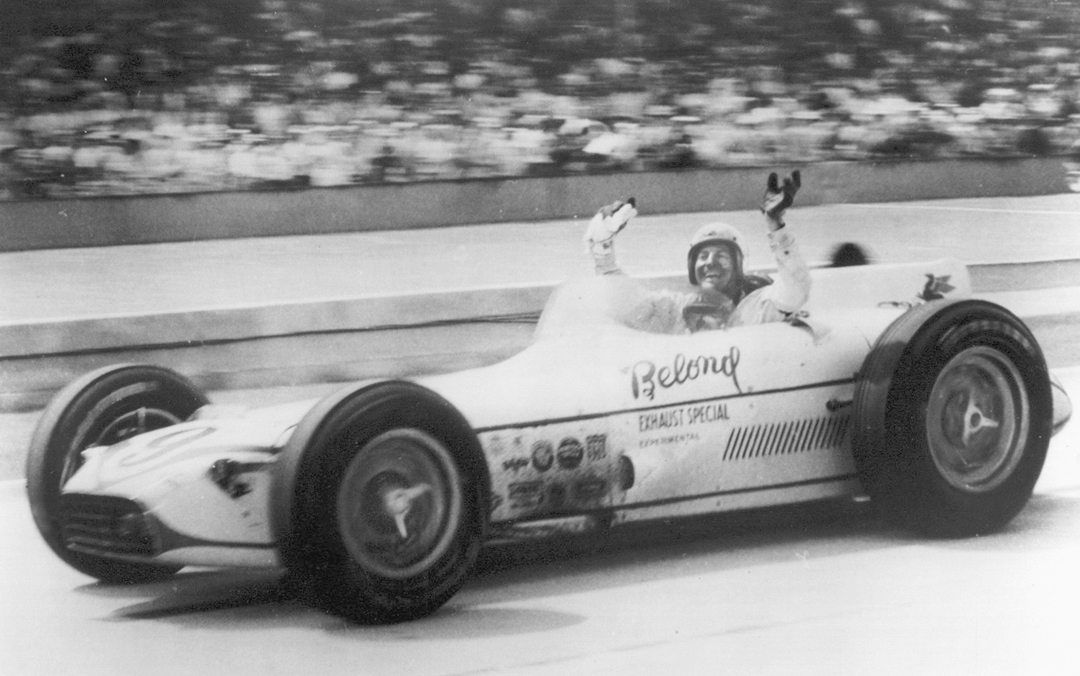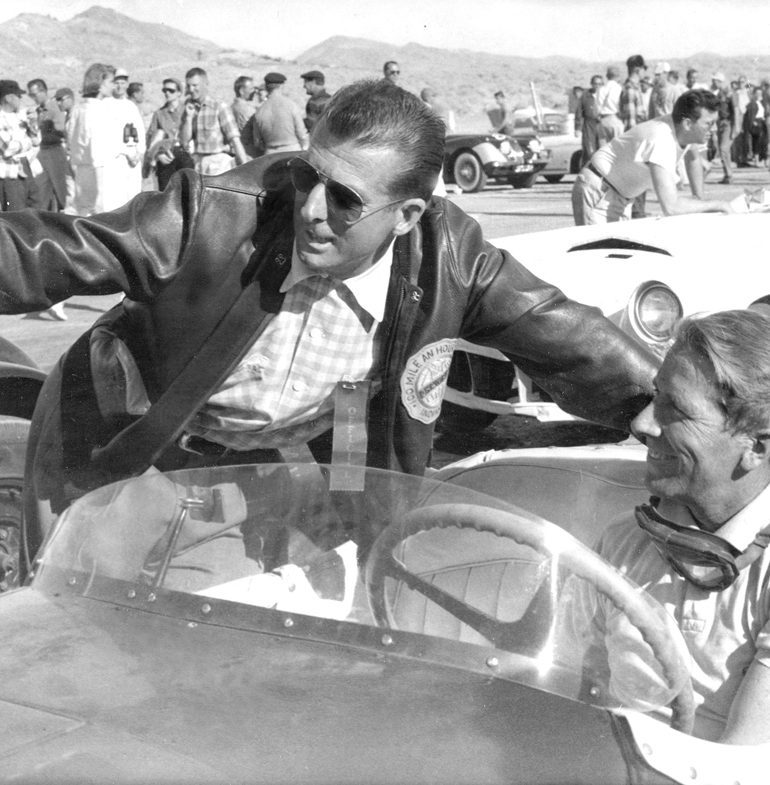During the early fifties, one of the biggest sports stars in the United States was Sam Hanks. Notice I said “sports,” not motor sports. He was one of the best-loved sports figures to come out of Southern California. For many of us enthralled with racing, he was our hero.

While still in high school, Hanks got a job working on aircraft engines. He traded work for flying instruction. His interest in flying lasted his lifetime. When WWII started, he worked at Lockheed doing preflight check outs on P38s. Then he served in the Army Air Corps at Wright Field working on the development of Pratt and Whitney engines. Interestingly enough and unbeknownst to one another, Rodger Ward, Carroll Shelby, and John Fitch, all flying officers, were also at Wright Field at the same time during the war. He also met an 18-year-old civil-service secretary, Alice Hedrick. They became sweethearts; a relationship that lasted for a lifetime. In 1945, Hanks was mustered out as a first lieutenant.
After graduating Alhambra High, Sam prepared his Model-A Ford and drag-raced it at the Muroc Dry Lake (now the site of Edwards Air Force Base). He began racing midgets in 1936 in the Los Angeles area. In 1937, he won the Pacific Coast Midget Championship in an Offy. But, in those days, winnings weren’t enough to make a living. Sam worked as an engineer and purchased an Offy engine plus a midget chassis. Entering as a car owner, driver, and mechanic, he won more than 80 races through 1941, when he was the National Midget Champion.
After the war, Hanks went back to midget racing, winning the Pacific Coast Championship in 1946 and the National AAA Championship in 1949. In July 1947, he married his lovely wife, Alice. Sam’s first drive at Indianapolis was in 1940 when he finished 13th. The next year he was injured during testing, the only time he was ever hurt in a racing accident.

Racing resumed at Indy after the war in 1946. Sam qualified on the front row, but the engine blew after 18 laps. Driving relief for Joe Chitwood, they placed 5th. For the next 12 years, Hanks competed in Champ Cars, but retired from midgets in 1952, the biggest ever money-winner as owner, driver, and mechanic. In 1952 he placed 3rd at Indy and was also 3rd in the National Championship. The following year, Sam was the AAA National Champion. In 1953 he was again 3rd at Indy and placed 2nd in 1956. In 1956, he competed in stock car road races at Pomona and Paramount Ranch, winning both.
In 1957, Sam Hanks won the Indy 500. After the race, he said, “I’d been dreaming about winning Indy for 17 years—ever since I first went there in 1940—so when I finally won it, I decided it was time to hang up my goggles for keeps.” He was 43 in an era when racing was so dangerous that many drivers didn’t live to 40. While drinking milk in Victory Lane, he told the cheering throng, “Ladies and gentlemen, I’ve loved every minute I’ve been here, but this is my last one.”
It didn’t turn out to be the last time Sam drove in anger, however. He had a contractual obligation to Ford, which he honored, so he drove stock cars for the rest of that year and won the Pacific Coast Championship. As a matter of fact, Hanks was probably as good on road courses as he was on ovals, but he was prevented from entering sports car races due to his professional status. In those days, the Sports Car Club of America was simon-pure and didn’t allow pros to compete with its amateur members. Even so, Sam was often seen at Southern California events. At Palm Springs in 1953, he drove an obsolete Formula One in exhibition and did 161.48 on the back straight setting a track record. The best winner Jack McAfee in a Ferrari could do was 142.85. Sam was a close friend of Culver City Buick dealer Bill Murphy, so he often wrenched and advised Bill at the wheel of his Kurtis.

After retirement, Sam served as Director of Racing at Indianapolis, a position he held until 1979. He was also Director of Racing for Los Angeles Times–sponsored races at Riverside and Ontario from 1958 through 1980. He and Ken Miles operated one of the first racing drivers’ schools at Mile Square in Orange County.
Sam Hanks was elected into a grand total of six halls of fame. He continued his interest in the air, flying Mach 1.2 in a Northrup T-38 with Chuck Yeager. He did Mach 2.1—1,500 mph—in an F-104 at Edwards in 1968. Sam was an active member of the Quiet Birdmen, the Professional Race Pilots Association and was on the Contest Committee for the National Championship Air Races.
In later years, Sam and I became friends. Alice was still working as an executive secretary and Sam could no longer drive, so I would visit him at their home in Pacific Palisades. We would also talk frequently on the phone.
Sam died on June 27, 1994. A memorial service was held in a hotel ballroom near the Van Nuys Airport on July 9, 1994. It was attended by hundreds of friends and fans who loved Sam. Many Quiet Birdmen and race aficionados were present. A missing-man formation composed of WWII fighter aircraft flew over the airport. They were so low that the rivets were visible from the ground.




